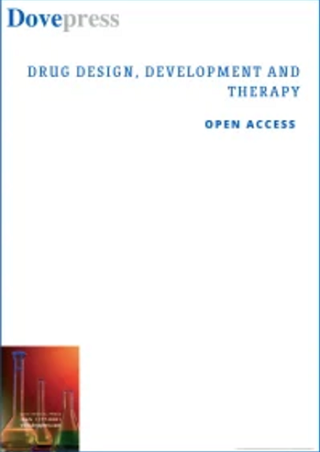Current Perspectives on Letermovir and Maribavir for the Management of Cytomegalovirus Infection in Solid Organ Transplant Recipients
IF 4.7
2区 医学
Q1 CHEMISTRY, MEDICINAL
引用次数: 0
Abstract
Abstract: Cytomegalovirus (CMV) infection is arguably the most important infectious complication that negatively affects the outcome of solid organ transplantation. For decades, CMV management after transplantation has relied on antiviral drugs that inhibit viral DNA polymerase (ganciclovir, foscarnet, and cidofovir). However, their use has been complicated by myelosuppression, nephrotoxicity, and selection of drug-resistant viruses. During the past few years, the therapeutic armamentarium for the management of CMV in solid organ transplant recipients has expanded with the approval of letermovir for CMV prophylaxis in high-risk CMV D+/R- kidney recipients, and maribavir for the treatment of refractory and resistant CMV infection. Both drugs offer significant improvement when compared to standard anti-CMV therapies; letermovir was as efficacious for CMV prevention, whereas maribavir was more effective in treating refractory and resistant CMV infections. Both letermovir and maribavir have favorable safety profiles compared to CMV DNA polymerase inhibitors, without the risk of neutropenia and leukopenia associated with ganciclovir and renal toxicities associated with foscarnet and cidofovir. Moreover, letermovir and maribavir are orally bioavailable, which allows convenient outpatient treatment. However, letermovir and maribavir have a significant drug interaction potential in solid organ transplant recipients, resulting in higher levels of calcineurin inhibitors (cyclosporine and tacrolimus) and mTOR inhibitors (sirolimus and everolimus). Both letermovir and maribavir are CMV-specific and do not have clinical efficacy against other herpes viruses. Thus, there is a need for additional antiviral drugs to prevent herpes simplex and other herpes viruses when clinically indicated. This article provides a comprehensive review of the clinical data supporting the use of letermovir and maribavir in clinical practice. The author provides perspectives on the role of these newly approved drugs in the current management landscape of CMV infection in solid organ transplantation.Keywords: cytomegalovirus, maribavir, letermovir, ganciclovir, drug resistance, prophylaxis, treatment
来替莫韦和马瑞巴韦治疗实体器官移植受者巨细胞病毒感染的当前前景
摘要:巨细胞病毒(CMV)感染可以说是对实体器官移植结果产生负面影响的最重要的感染性并发症。几十年来,移植后 CMV 的治疗一直依赖于抑制病毒 DNA 聚合酶的抗病毒药物(更昔洛韦、福斯卡尼和西多福韦)。然而,由于骨髓抑制、肾毒性和耐药病毒的产生,这些药物的使用变得复杂起来。在过去几年中,用于治疗实体器官移植受者CMV的药物种类不断增加,批准了来特莫韦(letermovir)用于高危CMV D+/R-肾脏受者的CMV预防,以及马利巴韦(maribavir)用于治疗难治性和耐药性CMV感染。与标准的抗CMV疗法相比,这两种药物都有明显改善;来特莫韦在预防CMV方面同样有效,而马利巴韦在治疗难治性和耐药性CMV感染方面更为有效。与 CMV DNA 聚合酶抑制剂相比,来特莫韦和马立巴韦都具有良好的安全性,没有更昔洛韦引起的中性粒细胞减少和白细胞减少的风险,也没有福斯奈德和西多福韦引起的肾毒性。此外,来曲米韦和马立巴韦可口服,方便门诊治疗。不过,在接受实体器官移植的患者中,来特莫韦和马立巴韦可能会产生明显的药物相互作用,导致钙神经蛋白抑制剂(环孢素和他克莫司)和 mTOR 抑制剂(西罗莫司和依维莫司)的水平升高。来替莫韦和马立巴韦都是 CMV 特异性药物,对其他疱疹病毒没有临床疗效。因此,临床上需要更多的抗病毒药物来预防单纯疱疹病毒和其他疱疹病毒。本文全面回顾了支持在临床实践中使用来特莫韦和马立巴韦的临床数据。关键词:巨细胞病毒;马拉巴韦;来特莫韦;更昔洛韦;耐药性;预防;治疗
本文章由计算机程序翻译,如有差异,请以英文原文为准。
求助全文
约1分钟内获得全文
求助全文
来源期刊

Drug Design, Development and Therapy
CHEMISTRY, MEDICINAL-PHARMACOLOGY & PHARMACY
CiteScore
9.00
自引率
0.00%
发文量
382
审稿时长
>12 weeks
期刊介绍:
Drug Design, Development and Therapy is an international, peer-reviewed, open access journal that spans the spectrum of drug design, discovery and development through to clinical applications.
The journal is characterized by the rapid reporting of high-quality original research, reviews, expert opinions, commentary and clinical studies in all therapeutic areas.
Specific topics covered by the journal include:
Drug target identification and validation
Phenotypic screening and target deconvolution
Biochemical analyses of drug targets and their pathways
New methods or relevant applications in molecular/drug design and computer-aided drug discovery*
Design, synthesis, and biological evaluation of novel biologically active compounds (including diagnostics or chemical probes)
Structural or molecular biological studies elucidating molecular recognition processes
Fragment-based drug discovery
Pharmaceutical/red biotechnology
Isolation, structural characterization, (bio)synthesis, bioengineering and pharmacological evaluation of natural products**
Distribution, pharmacokinetics and metabolic transformations of drugs or biologically active compounds in drug development
Drug delivery and formulation (design and characterization of dosage forms, release mechanisms and in vivo testing)
Preclinical development studies
Translational animal models
Mechanisms of action and signalling pathways
Toxicology
Gene therapy, cell therapy and immunotherapy
Personalized medicine and pharmacogenomics
Clinical drug evaluation
Patient safety and sustained use of medicines.
 求助内容:
求助内容: 应助结果提醒方式:
应助结果提醒方式:


